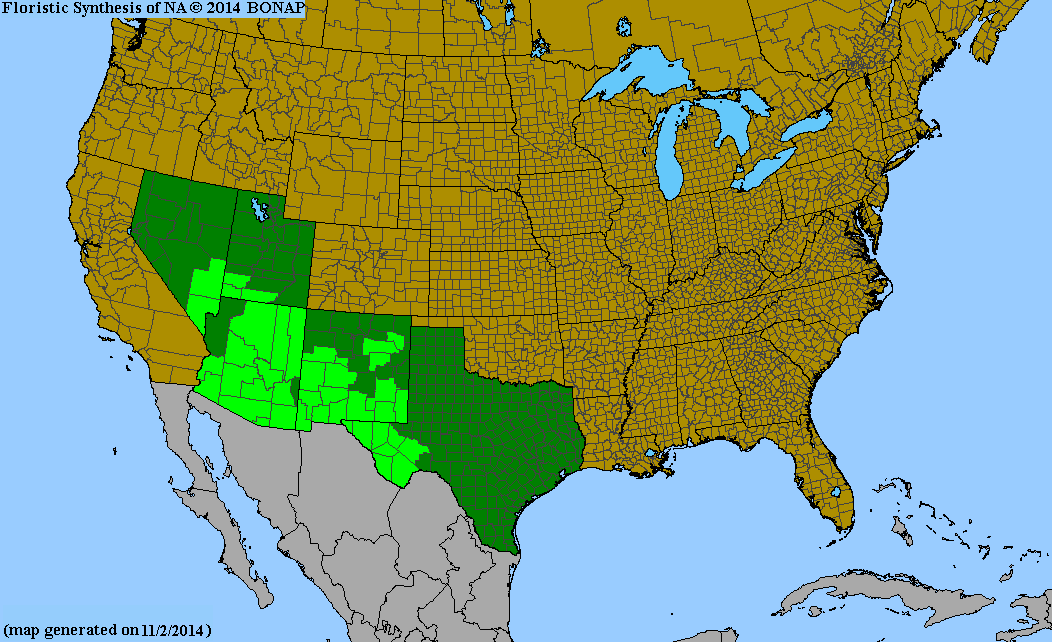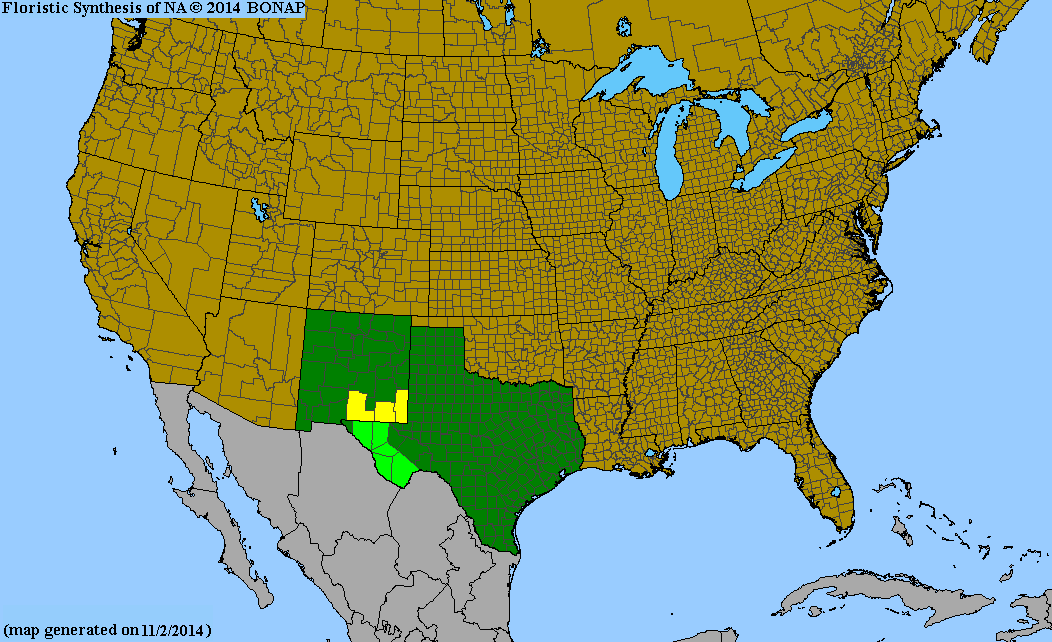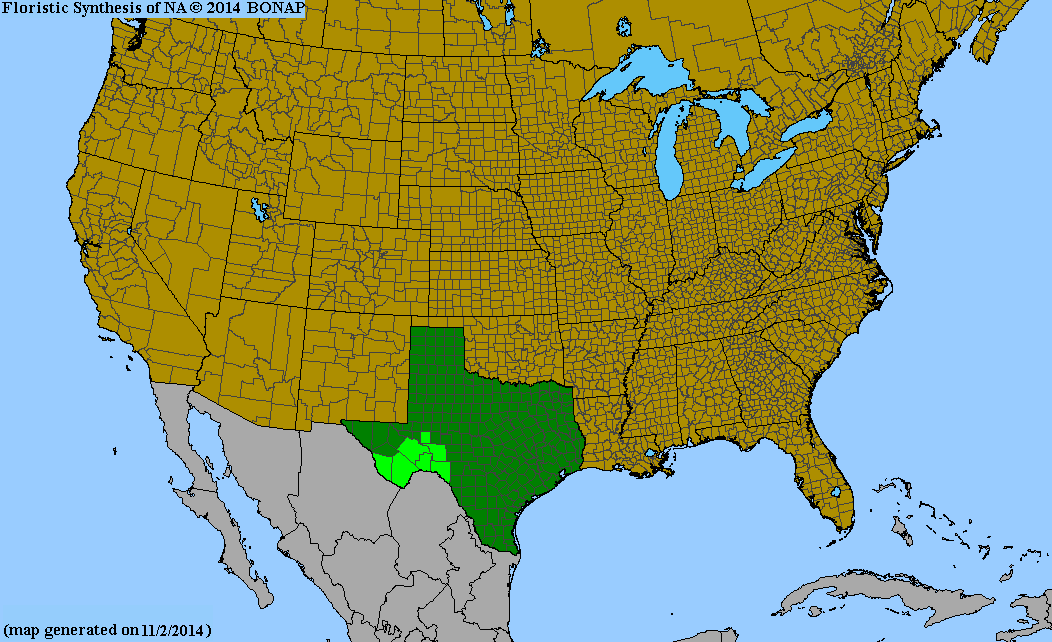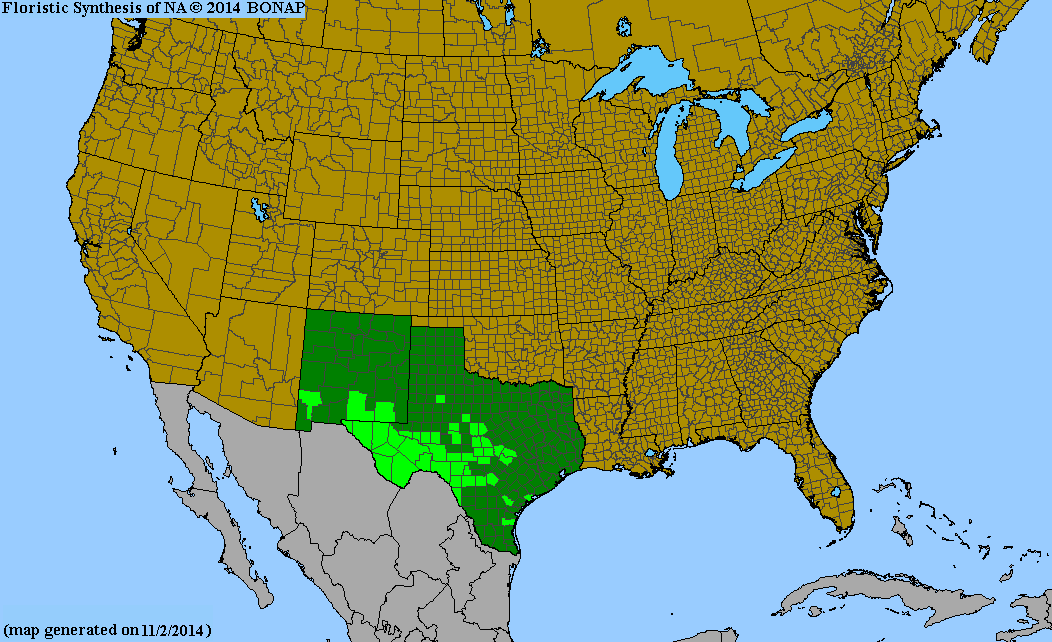Click on the images below to see larger versions.
| Scientific Name | Yucca elata | USDA PLANTS Symbol | YUEL |
| Common Name | Soaptree Yucca | ITIS Taxonomic Serial No. | 43139 |
| Family | Asparagaceae (Asparagus) formerly Agavaceae | SEINet Reference |
Click Here |
| Description | Habitat: Desert habitat; mesas, sandy plains, hillsides from 1500 to 6000 ft. Plant: Erect, tree-like yucca with stems 3 to 15 feet tall and 1 to 5 ascending branches up to 25 ft tall. Leaves: Large, symmetrical head of fine, arching, flexible, gray-green to blue-green linear, sharp-pointed leaves 12 to 36 inches long and less than 1/2-inch wide, convex in cross-section; white or greenish-white margins with curly filaments, no teeth. Inflorescence: Flowering stalk 3 to 7 feet long with a very large spreading panicle 1-1/2 to 11 ft. long and 1-1/2 to 3 ft. in diameter, containing of 20 to 45 side branches covered with clusters of bell-shaped flowers, creamy-white, may be greenish or pink-tinged; petals 1-3/8 to 2-1/4 inches long. Bloom Period: May to July. References: "Manual of the Vascular Plants of Texas" by Correll and Johnston and SEINet. |
BONAP Distribution Map |
Texas Status: Native |
| Scientific Name | Yucca faxonia | USDA PLANTS Symbol | YUFA |
| Common Name | Giant Dagger Yucca, Faxon Yucca | ITIS Taxonomic Serial No. | 43119 |
| Family | Asparagaceae (Asparagus) formerly Agavaceae | SEINet Reference |
Click Here |
| Description | Habitat: Desert habitat; rocky slopes, bluffs, plains, 2600 to 6900 ft. Plant: Solitary, erect, large, tree-like, 8 to 30 feet tall, including flower spike; usually unbranched or with 2 to 4 branches. Leaves: Erect, rigid, spine-tipped linear leaves 17 to 43 inches long and 1-1/4 to over 3 inches wide, pale green to yellow-green with curling, brownish threadlike fibers on the edges; large numbers drooping dead leaves below. Inflorescence: A very large cluster of white sometimes purple-tinged blossoms in a broadly ovoid, often branched panicle from almost 2 to more than 8 feet tall, lower portion within the foliage; many hanging, bell-shaped flowers, 1-1/2 to more than 4 inches long. Bloom Period: Late winter through spring. Fruit: Hanging, fleshy, greenish and berry-like, elongated, 1-1/2 to 5+ inches long and 3/4 to 1-1/2 inches across. References: "Little Big Bend" by Roy Morey, "Manual of the Vascular Plants of Texas" by Correll and Johnston, and SEINet. |
BONAP Distribution Map |
Texas Status: Native |
| Scientific Name | Yucca thompsoniana | USDA PLANTS Symbol | YUTH |
| Common Name | Thompson Yucca, Beaked Yucca | ITIS Taxonomic Serial No. | 43153 |
| Family | Asparagaceae (Asparagus) formwerly Agavaceaea | SEINet Reference |
Click Here |
| Description | Habitat: Desert habitat; rocky slopes and knolls, 650 to 4600 ft. Plant: Solitary, erect, large, tree-like, usually single trunk up to 10 feet high, not including flower spike. Leaves: Often asymmetrical rosette of 100 or more leaves radiating from the top of the trunk with drooping dead leaves below; thin, flexible, mostly linear leaves 8 to 12 inches long up to 1/2 inch wide; minutely-toothed yellow to brownish edges. Inflorescence: A very large cluster of blossoms in a narrowly ellipsoidal panicle from 1-1/2 to 3 feet tall starting usually 4 to 8 inches above the leaves and with 20 to 34 branchlets; many hanging, globe- to bell-shaped flowers, white petals 1-1/2 to 2-1/2 inches long. Bloom Period: April to May. Fruit: Erect ellipsoidal capsule, 1-3/8 to 2-3/4 inches long and 3/4 to 1 inch across with a long twisted beak that flares when dry. Notes: The photos labeled Y. thompsoniana below may be mis-identified because (a) they were taken in the Chiso Basin at ~5300 ft. elevation, (b) the leaves are wider than 1/2 inch and (c) the inflorescence is well within the foliage. References: "Little Big Bend" by Roy Morey, "Manual of the Vascular Plants of Texas" by Correll and Johnston, and SEINet. |
BONAP Distribution Map |
Texas Status: Native |
| Scientific Name | Yucca treculeana (Yucca torreyi) | USDA PLANTS Symbol | YUTR |
| Common Name | Spanish Dagger, Don Quixote's Lace | ITIS Taxonomic Serial No. | 43123 |
| Family | Asparagaceae (Asparagus) formerly Agavaceae | SEINet Reference |
Click Here |
| Description | Habitat: Desert habitat; grassy or rocky slopes or mesas, brushland, chaparral; up to 5200 ft. Plant: Solitary, erect, large, tree-like, usually 1 or 2 but as many as 8 ragged, shaggy trunks of varying heights; up to 14 feet high (rarely); trunks may be branched. Leaves: Small terminal head of a few blades or a large, elongated head of many leaf blades; blades hanging at all angles, rigid, thick, yellowish to bluish green, usually U- or V-shaped in cross section, 12 to 40 inches long and 1-1/4 to 2 inches wide; margins with initially curly, becoming straight, light brown fibers. Inflorescence: Very large, dense cluster of blossoms in an ovoid or narrowly ellipsoidal panicle from 14 to 28 inches long usually with a fraction of its length above the leaf blades; many globe- to bell-shaped blossoms, cream-colored occasionally deeply tinged with dark purple; 1-1/2 to 2-1/2 inches long. Bloom Period: March to May. Fruit: Cylindrical or ovoid, hanging, fleshy capsule 2-3/4 to 4 inches long, 1 to 1-1/2 inches across, dark brown. References: "Little Big Bend" by Roy Morey, "Manual of the Vascular Plants of Texas" by Correll and Johnston, and SEINet. |
BONAP Distribution Map |
Texas Status: Native |













